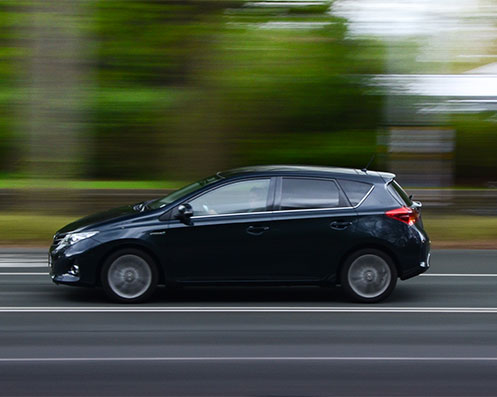95 Waltham avenue, Hayes, UB31TD.

The Practical Driving Test is based at one of the many UK Driving Test Centres in the UK or one of the new Multi Purpose Test Centres. You will be driving on roads on a predetermined route, accompanied by an examiner from the Driving Standards Agency. To pass the test you have to give a safe drive in a variety of different road and traffic conditions, commit less than 15 driving faults, and not commit any serious or dangerous faults.
If you wish your driving instructor can accompany you on the test, but he or she must sit in the back directly behind you, and not interfere with the test at all.
It's best to arrive at the test centre 5-10 minutes before your test. At the allotted time an examiner will call your name. The examiner will then check you your driving licence details and ask you to sign a residency and insurance declaration. The examiner will then ask you to lead the way to your car.
On the way to the car the Examiner will ask you to read a number plate on a vehicle at a distance of approximately 20 metres away to check your eyesight. If you can not read the number plate successfully the test will terminate there and then.
Before you start to drive the Examiner will ask you two car maintenance related questions in the form of a show me, tell me question. If you fail to answer these questions correctly you will be marked with 1 driving fault.
During the driving test the candidate must ensure that they are following the rules and regulations taking account of the road conditions and having regard of the environmental conditions. You will drive on a range of roads with different layouts and speed limits and you should be able to negotiate any major junction. You will not be asked to use Motorways.
The examiner will ask you to pull over to the side of the road and move away again several times, some of which may be on an uphill incline.
One in every three or four tests will include a controlled stop, also known as an Emergency Stop.
You will also have to perform one out of the following list of Manoeuvres.
Following directions from a sat nav
During the independent driving part of the test, most candidates will be asked to follow directions from a sat nav.
The examiner will provide the sat nav (a TomTom Start 52) and set it up. You won’t need to set the route - the examiner will do this for you. So, it doesn’t matter what make or model of sat nav you practise with.
You can’t follow directions from your own sat nav during the test - you have to use the one supplied by the examiner.
You’ll be able to ask the examiner for confirmation of where you’re going if you’re not sure. It won’t matter if you go the wrong way unless you make a fault while doing it.
One in 5 driving tests won’t use a sat nav. You’ll need to follow traffic signs instead.
The whole test is usually complete within 35-40 minutes.
At the end of the test the examiner will inform you whether you have been successful or not, and then will offer you a debrief on your drive. It's useful if you allow your driving instructor to listen in to the debrief.
If successful the examiner will give you a pass certificate and will then take your licence from you so it can be exhanged for a Full Driving Licence.